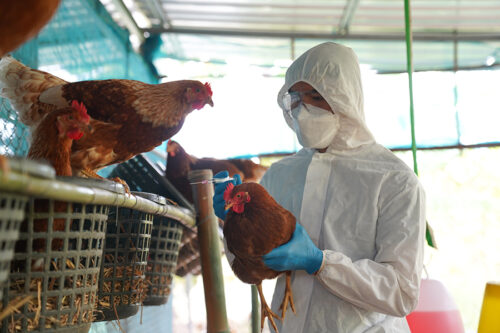Epidemiologists around the world are keeping a close eye on the H5N1 strain of avian influenza. Identified in two human cases in Cambodia in February 2023, the H5N1 viruses are from clade 2.3.2.1c. These strains are different from the H5N1 viruses now spreading throughout wild birds and poultry populations in the U.S.
“I’m keeping a close eye on it as an expert, but as a member of the community, as a parent and someone who [has been] recently experiencing the COVID-19 pandemic, I’m not worried about this right now,” said Caitlin Rivers, an epidemiologist at the Johns Hopkins Center for Health Security. “This is an animal health issue right now that has a theoretical risk to become a human health issue.”
Recently, scientists have found the H5N1 virus infecting mammals around the globe, including minks in Spain, seals in Scotland, and sea lions and dolphins in South America. While human-to-human transmission has rarely been documented, the potential spillover of H5N1 from birds to mammals remains an issue of concern to epidemiologists.
The U.S. retains a stockpile of egg-based vaccines for the H5N1 strain. Additional efforts to develop effective vaccines are also underway.




